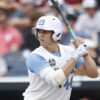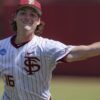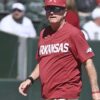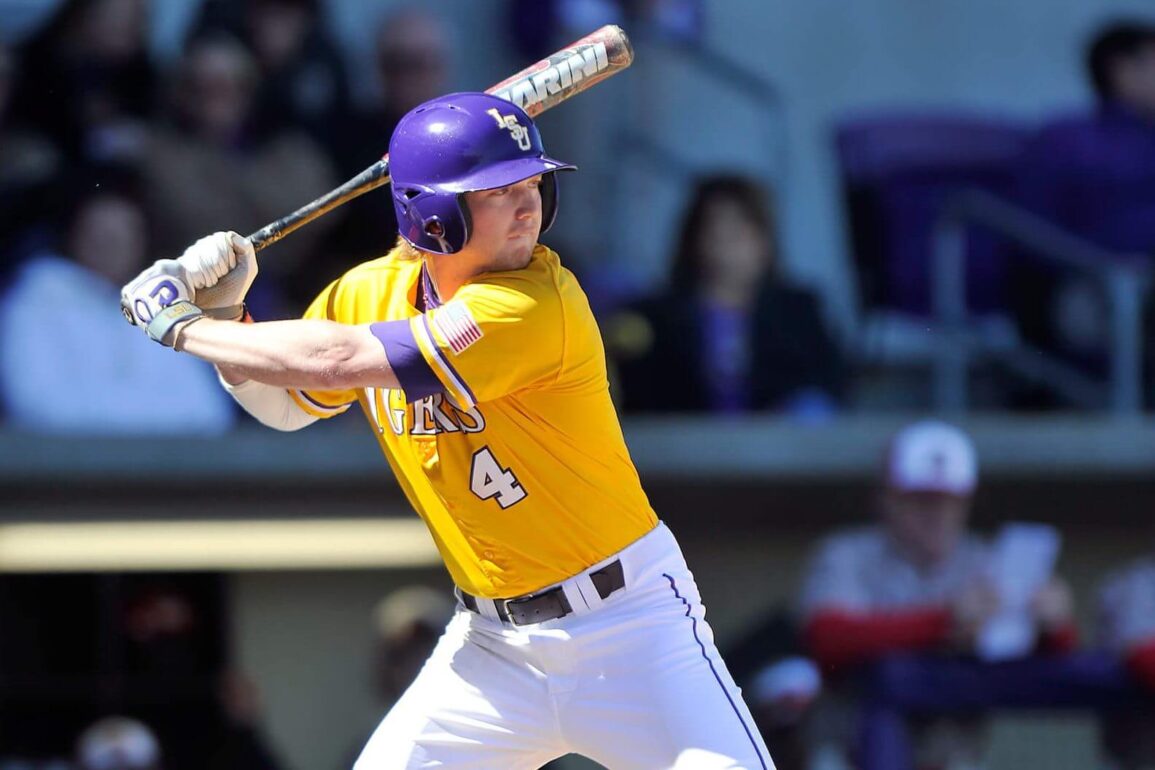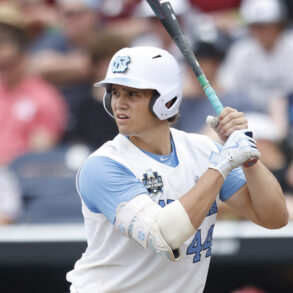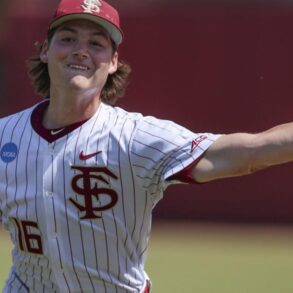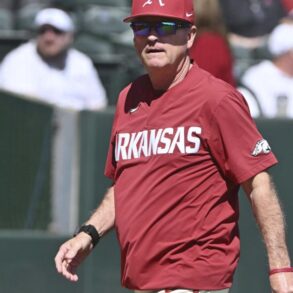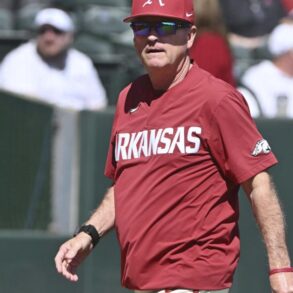The college baseball season begins Friday. The sport has never been in a better place. More games are on television. More fans are attending games in person. And the talent level is at an all-time high.
We talked to 10 coaches to get their thoughts on various topics impacting the sport. In Part 1, published yesterday, we asked the coaches to name the best players in the game and identify teams to watch this spring. Today, in Part 2, the coaches share some recruiting memories. Who is the biggest recruiting find of their career? What about the one who got away? In Part 3, on Wednesday, we dive into some hot topics in college baseball — roster sizes and revenue sharing. And in Part 4, on Thursday, the coaches discuss NIL and the transfer portal.
Here are the coaches:
- Elliott Avent, NC State
- Willie Bloomquist, Arizona State
- Paul Mainieri, South Carolina
- Nick Mingione, Kentucky
- Billy O’Conner, Xavier
- Brian O’Connor, Virginia
- Kevin O’Sullivan, Florida
- Steve Sabins, West Virginia
- Brock Ungricht, San Diego
- Mark Wasikowski, Oregon
Who is the biggest recruiting find of your career?
Avent: I’d have to say Trea Turner (NC State, 2012-14). Nobody was really recruiting him. And he sent a video out to several schools, some in the ACC. At the time, he wanted to be in engineering. So he sent a lot tapes out to schools that were engineering schools, which NC State is one of those. Chris Hart, our associate head coach, he watched the tape and went to see the kid play and fell in love with him and the rest is kind of history. I remember at an ACC coaches meeting one time, a couple of the coaches came up to me and said, “How in the world did you get Trea Turner out of Florida?” I said I had an assistant coach who saw a video and did his job. But Trea was a surprise because he kind of blew up the summer after we signed him.
Advertisement
Bloomquist: I’ll say Ryan Campos (Arizona State, 2022-24). Campy was my first commit when I got the job. He had a pretty nice career for us.
Mainieri: Raph Rhymes (LSU, 2011-13). He was a walk-on, and I didn’t keep him. He transferred to LSU Eunice (junior college), became the national player of the year and I had to recruit him back to LSU and then he led the country in hitting (.431 in 2012).
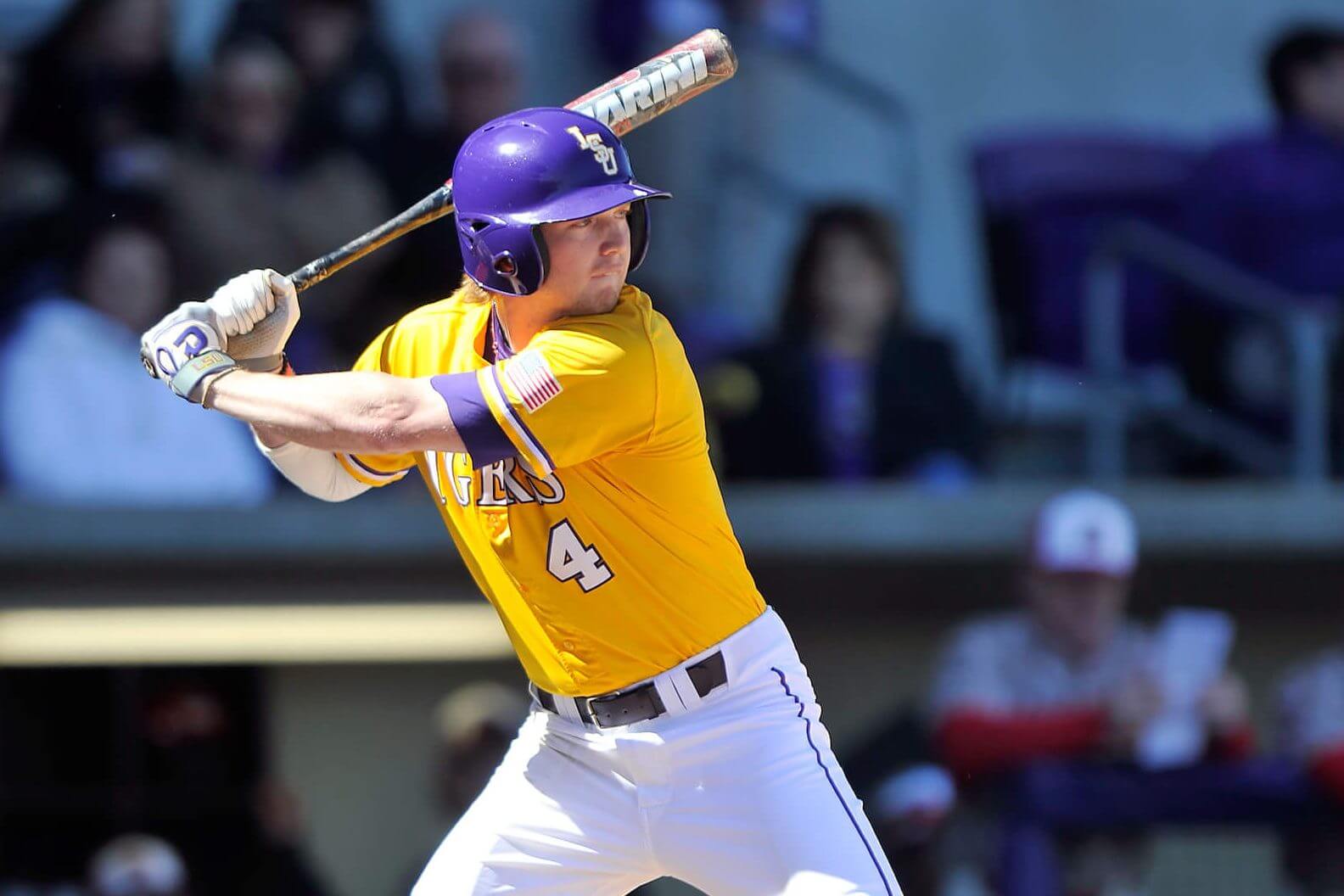
Raph Rhymes hit .373 in three seasons at LSU. (LSU Athletics)
Mingione: Jake Mangum (Mississippi State, 2016-19). As a freshman, he wins the SEC batting title. And he turns out to be the all-time career hits leader in the history of the Southeastern Conference.
Billy O’Conner: I would say a kid named Conor Grammes (Xavier, 2017-19) has been one of the higher-profile recruits that we’ve been able to get, and quite honestly, we had no idea what we were getting when we got him. He’s a kid that ended up being a fifth-rounder. He’s still in the Diamondbacks organization. He committed to us as a switch-hitting shortstop and never played any shortstop in his entire career. He was a really good hitter in college but ended up being a fifth-round draft pick as a pitcher, which we didn’t even know he pitched when we recruited him. But he turned into a high 90s arm and had an unbelievable college career for us.
Brian O’Connor: I’d have to say Danny Hultzen (Virginia, 2009-11). And that’s because of the impact that he had on both the offensive side and the pitching side in our program. He became the second overall pick in the 2011 draft, multiple All-America selections. Two of his years — 2009 is the first year we went to Omaha, 2011 was the second year. In all three years, he anchored our pitching staff and also played first base. He was the John Olerud Award winner (best two-way player). So just a pure impact to our program. And he wasn’t a big name at all nationally from a recruiting standpoint. But huge impact on our program, and then becoming the second overall pick was pretty impressive.
Advertisement
O’Sullivan: I’m going to go with two. Two guys that got to the big leagues. This is going back a ways. I would have to say Paco Rodriguez (Florida, 2010-12), the left-handed reliever, and Preston Tucker (Florida, 2009-12), Kyle’s older brother. Preston wasn’t very highly recruited but obviously had a decorated career at Florida. Got to the Florida Hall of Fame. Got to the big leagues. Paco’s story is really interesting. Played in Omaha in June (2012). Was drafted in June. And pitched in Dodger Stadium in August, I believe, or September. All in a three-month span.
Sabins: JJ Wetherholt (West Virginia, 2022-24). He was a 15-year-old, playing for Beaver Valley Red, unrecruited, only Division I offer, not nationally ranked from Perfect Game or Prep Baseball Report, playing with small teams and in men’s leagues in the Pittsburgh area, and committed as a 5’9″, 160-pound second baseman.
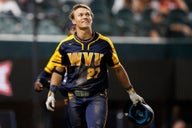
GO DEEPER
How did West Virginia find JJ Wetherholt? Recruiting stories on top 2024 MLB Draft prospects
Ungricht: I’ve got to go with Tommy Edman (Stanford, 2014-16). He was our last commit of our class at Stanford. Like a walk-on. And the guy’s the NLCS MVP. He wasn’t a highly sought recruit. You can only get 10 commitments (in a class) at Stanford, and he was our 10th guy, and he just signed an $80 million deal. So I would have to go with Tommy.
Wasikowski: Ryan Perry (Arizona, 2006-08) was a kid that I found (as an assistant) at Arizona. He was pitching in a men’s league game the summer after his senior year in high school. He had nowhere to go. He didn’t even pitch really in high school. He was a golfer at Marana High School outside of Tucson. I saw him pitching at Kino Sports Complex in Tucson. I saw him pitching literally with a white tank top on. He was a 6-4 kid that was super whippy and loose. The only reason why I saw him was because I got sick of watching the game that I was watching, because the players on that field, a lot of them were going to Arizona State. They were committed to play for Pat Murphy at Arizona State. I was frustrated watching those guys because they were really good. Then I turned around, and sure enough, this kid’s throwing, and I just wandered up to him and said, “Who are you?” We started talking, and we found out his story. He ended up being a first-round draft pick his junior year, throwing 102 miles an hour and was a key pitcher in our bullpen. He pitched in the big leagues for several years. That would be the biggest find. Totally off the grid.
Who is the one recruit who got away?
Avent: Oh God, there have been many. There have been many. I know one that always bothered me was a kid that went to North Carolina, left-handed hitter who could really hit. Dustin Ackley. Also, Shawn Armstrong, I’d say him too. Shawn Armstrong was a pitcher from down New Bern (N.C.) way. I thought we should have got him. (Armstrong went to East Carolina.)
Advertisement
Bloomquist: Jett Williams (signed with Mississippi State but didn’t enroll after being picked by the Mets in the first round of the 2022 draft).
Mainieri: Oh, that’s an easy one. Michael Restovich. I was at Notre Dame and I signed him and then he signed professionally (second-round pick in the 1997 MLB Draft) and it broke my heart for about 20 years.
Mingione: Kyle Wright (signed with Vanderbilt).
Billy O’Conner: I’ve got a long, long list of guys who told me no. There’s a kid, Jonathan Stiever, early on in my career — which I would say I was probably more emotional early in my career from a recruiting standpoint — where I really had a great relationship with him and his family and thought he was going to come to Xavier. Ended up going to Indiana (in 2015), and he also pitched in the big leagues. He was up with the White Sox a few years back. But that was one that, in my formative years of coaching and recruiting, that kind of broke my heart.
Brian O’Connor: I think about it as a group. It was in our 2016 recruiting class. We lost three recruits to the MLB Draft that didn’t show up. And we don’t traditionally have large recruiting classes because typically the majority of our signees come to UVA. And that year we lost three players. Joey Wentz, a left-handed pitcher, Max Kranick, a right-handed pitcher, and Nolan Jones, a middle infielder. Two of those three have played in Major League Baseball, Kranick and Jones. And it just kind of left a little bit of a void for a couple of years. It just so happens their first year would have been on our 2017 team, and 2018 and ’19, those seasons are the only two years that the University of Virginia has not played in the NCAA Tournament in the last 21 years. And so I would say the impact of those three guys not showing up has been the biggest ones that have gotten away.
O’Sullivan: Hagan Smith. We were down, I think, to the final two with him with Arkansas.
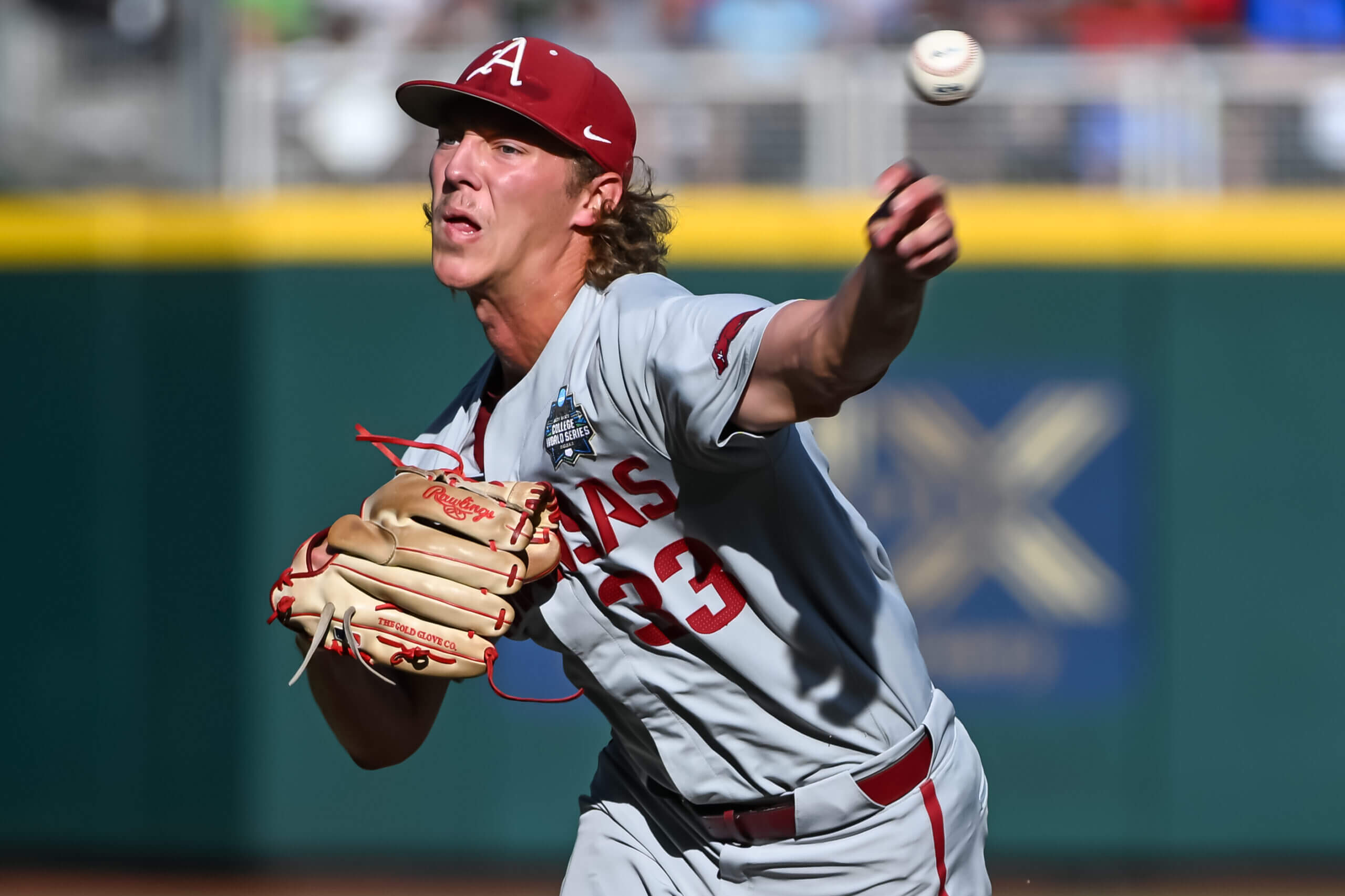
Hagen Smith to Florida? It was possible, according to Gators coach Kevin O’Sullivan. (Steven Branscombe / Imagn Images)
Sabins: I was the first person that offered Dylan Crews (signed with LSU). He came on a visit when he was 15 years old. So that was a cool story. And Enrique Bradfield came on a visit the same year from Miami. He came up with like five teammates to a camp and we offered him and he loved it here and he ended up committing to Vanderbilt. But we were both Enrique’s and Dylan Crews’ first offer.
Advertisement
Ungricht: I remember the kid (Ryan) Kreidler. We were recruiting him pretty hard (at Stanford). He went to UCLA, made it to the big leagues. I was kind of shocked, like, “Wow, we didn’t get him.” Carson Fulmer is another one. We were on him pretty tough. He ended up going to Vanderbilt. But that’s kind of expected. So I would say Kreidler.
Wasikowski: I can’t talk about kids that we’ve recently lost because they haven’t signed yet. Well, the flavor of the month (Paul Skenes) went to LSU. That kid just frickin’, ah man, just broke my back when he decided to go to LSU, I really felt like he was coming to play for us, or we had a chance to get him at least. I knew that coming out of the portal, coming from Air Force, he was going to be awesome. We knew that he was going to be awesome when he was down at El Toro (Calif.) High School. Then he went to LSU, and then he did what he did, and he was as good as he was, it wasn’t a surprise. That was a tough one.
What stat matters most when you are evaluating a hitter?
Avent: It’s about production, so it’s about RBIs and runs scored. Runs scored means you’re on base however you get there, and RBIs mean you can drive people in. I’ve always been a big fan of doubles. It seems like today everybody wants to hit home runs, but home runs have led to a lot more strikeouts. If I look at an opponent when I’m going to play somebody and a hitter has more walks than strikeouts, I know he’s going to be a problem.
Bloomquist: On-base percentage. On-base or slugging, one of those two. Probably even ahead of slugging would probably be RBIs. On base and RBIs. Getting guys in scoring position, that type of stuff, and just run producers, guys that generate runs. And again, as part of that, I’ll determine if a guy is more of a table setter, then I’ll look at runs scored and on-base percentage. If a guy is more of an RBI guy, then I’ll look at slugging and RBIs.
Mainieri: I’m old-fashioned. RBIs.
Mingione: Man, there’s so many we look at. Walk to strikeout percentage.
Brian O’Connor: I wouldn’t say this is as a stat, but maybe a quality or a skill, is barrel consistency when we’re looking at a hitter. You look at our lineups historically and you’ll see a lot of guys with high barrel contact percentages. And our offense is very much driven off a team baseball mindset. So barrel accuracy and athleticism are really important when we recruit hitters.
Advertisement
Billy O’Conner: I would say OPS is the one that kind of stands out as far as how they’re really impacting the offense.
O’Sullivan: That’s an interesting question because I think the game is shifting. The strikeout-to-walk ratio is now becoming more of a prevalent stat back into the game. Five to 10 years ago, it was all about launch angles and home runs, but I think we’re kind of shifting back a little bit. We’ve made a conscious effort, when we went into the portal, to have some guys that can do different things and not rely so much on the three-run homer as we have maybe in the past. Guys that can handle the bat a little bit more and limit the strikeouts and have more of an equal balance between the on-base percentage and strikeouts.
Sabins: I guess that stat would be contact percentage, in-zone contact percentage. Basically, if they swing and the pitch is in the zone does the ball move forward?
Ungricht: First thing, you want to check out the average. But then I like to go right to the walks, the strikeouts, on-base percentage. That’s something that we base our team offense around, is getting guys on base. Is this guy doing what he can with the bat to get on base?
Wasikowski: Assuming the kid’s got the skills, strikeout-to-walk balance. Does he manage the strike zone? I mean, OPS is the biggest, right? OPS is No. 1, and then how well does he manage the strike zone with strikeouts and walks?
What stat matters when evaluating a pitcher — and you can’t say wins or runs?
Avent: Walks. Walks are going to get you beat.
Bloomquist: Walk-to-strikeout ratio. Can he miss barrels, or is he walking guys? Because I’ve seen my fair share of walks in the past three years. I need guys that can throw strikes, strike guys out, swing and miss.
Mainieri: I’d have to say WHIP.
Mingione: Swing and miss percentage.
Advertisement
Billy O’Conner: I would say strikeout-to-walk ratio is the first thing I go to look at to see how good they really are. When those numbers get pretty disparate between the strikeouts and walks, you know you really got something there.
Brian O’Connor: Strike percentage. Because, again, we’re looking at them in high school, right? And you can nowadays, with high school recruiting, you go to Perfect Game events or PBR events or whatever might be, all that data is out there. All the events that you can go to, you can actually get online and see their strike percentage. And a great pitcher must be able to locate his fastball in the zone. And they have at have least one secondary pitch to have success at the next level of baseball.
O’Sullivan: I mean, I think we’re all fighting this as an industry. Once again, we all chase velocity, but I think the ability to throw more strikes, to command the ball a little bit better. And I do think, once again, I think you’re starting to see more sink the baseball rather than pitch up in the strike zone. So I guess the ability to just throw more strikes and be a little bit more efficient from a starting standpoint to hopefully get back to more of a traditional bullpen and not overuse your pen as much and maybe get guys a little bit deeper in the game.
Sabins: Strike percentage on his three pitches.
Ungricht: Strikeouts and strikeout-to-walk ratio.
Wasikowski: You’re looking at, does he have a history of throwing strikes, or is there a history of wildness? But pitchers are a little tougher because there’s got to be a projection element. The guys that throw strikes when they’re 15, 16, 17 years old, sometimes they reach their potential too quick. So you’ve got to have a little bit more of the projection piece, I think, when it comes to pitchers.
Do you like conference tournaments?
Avent: I think a conference tournament has a certain great flavor to it, but I’ve never been a proponent of the conference tournament winner being the one that goes to the NCAA Tournament. I think the regular-season winner should get the bid to the NCAA.
Advertisement
Bloomquist: I do. The timing of it is very tricky because you have teams that are just finishing a weekend series and then you start your conference tournament on a Wednesday. With teams that already know that are going to the postseason, some of those teams are trying to set their pitching up for the postseason, other teams are trying to rush a guy back on five days rest when they’re used to a seven-day rest to win that first game or whatever in the conference tournament. It makes it tricky, to be honest. I think if we’re going to do it, let’s keep it — it’d be very tough to do, but let’s do it on a weekend and play a bunch of games over a weekend like we’re used to versus trying to rush it and play a Wednesday through a Sunday. It just kind of makes it tough coming off a conference weekend.
Mainieri: I think it’s exciting, at the Southeastern Conference in particular, you potentially could have 10 to 12 or 14 ranked teams in the same conference. It’s just really exciting. The regular season is a grind and you’re trying to avoid disaster, so to speak, all year. But when you get to a conference tournament, I think it’s fun. Many of the schools are already in the NCAA Tournament. It’s great competition. It’s good for the scouts to come to one place and be able to see all the best kids. Personally, I just think they have always been very exciting. I’d hate to see them go away.
Mingione: Yes, I do. In our case, we play a 30-game SEC schedule. And for me, our conference tournament provides teams and their fan bases an opportunity to compete for another championship.
Billy O’Conner: I do. There’s 300-and-something college baseball teams and only 64 get to play in the NCAA Tournament, whereas I imagine there’s probably close to 275 that get to be a part of their conference tournament. So for a lot of college baseball, 200-and-something teams, the only postseason experience they get, the only kind of win-or-go-home experience they get is part of the conference tournament. So yeah, I think it’s a good tradition within college athletics, and especially college baseball.
Brian O’Connor: I do. I love conference tournaments. I love the idea of competing for something, and I believe it gets you prepared for the NCAA Tournament as well. Anytime your team can get a chance to compete for a championship, it’s a good thing. Our first two trips to Omaha, in 2009 and 2011, in those years, we won the ACC (tournament) championship. Now, the other five trips we didn’t, including the year we won the national championship in ’15.
I do like conference tournaments, but I would prefer the model of expanding the NCAA Tournament if it meant eliminating the conference tournament. Mike Rooney, who’s a college baseball analyst, has a great model for this. The first round of the NCAA is the best two out of three on 32 campus sites. That would be great for college baseball, rather than right now the Regionals on 16 campus sites. So you basically, in this model, play three weekends in a row before Omaha, where it’s two out of three with two teams. And we’re seeing just in the first round of the College Football Playoff how cool it is to have more things on campus, right? And so if that meant eliminating the conference tournaments to go to this type of model, I would be all for it.
O’Sullivan: I do. Just because I’m more of a traditionalist. In our league, I always like the East and the West because you can fight for a championship in the East, you can fight for a championship in the West. Now, obviously, we have 16 teams and it’s just one division. This year, we’re going to single elimination, which makes it a little bit more difficult because it makes it harder for travel, for fans. You’re driving from Gainesville to go to Hoover for a potential one game, which is going to make it a little bit more difficult for fans to make commitments to go to Hoover.
Advertisement
But I’m more of a traditionalist. I like the championship. I think it’s good for the players. It’s a great experience. The town of Hoover puts on a terrific show. It gives you a little bit of a pre-run to Omaha because you get the police escorts and those types of things. The players enjoy it. Plus, it gives you a chance to get your pitchers work before you get into the postseason. I would hate to do away with that. But ideally, you’d like to be able to play three games and get three of your starters some action before we start Regional play the following weekend.
Sabins: I don’t like conference tournaments. But I like that we’re all competing for national championships, and so, from a coach’s perspective, I don’t like them, but I do recognize the value and the excitement it brings to fans and members of the community.
Ungricht: Yes. I think it’s good for us, in particular, because (the WCC) gets an opportunity to get another team in (the NCAA Tournament). I know other coaches won’t like that, but it’s been good for us. We won the regular season last year and the tournament, but (three) years ago we ended up finishing second, one game out of first. It was a damn good year, we won 37 games and we ended up winning the tournament. So we got us and Gonzaga (in the NCAA Tournament), and Gonzaga was a top-15 team that year, and I felt like we were deserving of going too. So I do think it’s a benefit for maybe the conferences that do get overlooked that could get two teams.
Wasikowski: Yes. Play to win. I like champions. I like the chance to become a champion. I think it teaches kids the right stuff. I think we need to try to promote more championship environment-type things to where they’re … let’s face it, winners and losers get treated differently in the world, and if you can win and teach our young people the value of winning more and more at the earliest age, I think tournaments are one way that you can teach that, and I think it’s great.
(Photos of Brian O’Connor, Willie Bloomquist: Steven Branscombe / Imagn Images, Arizona State University)
This post was originally published on this site be sure to check out more of their content.


